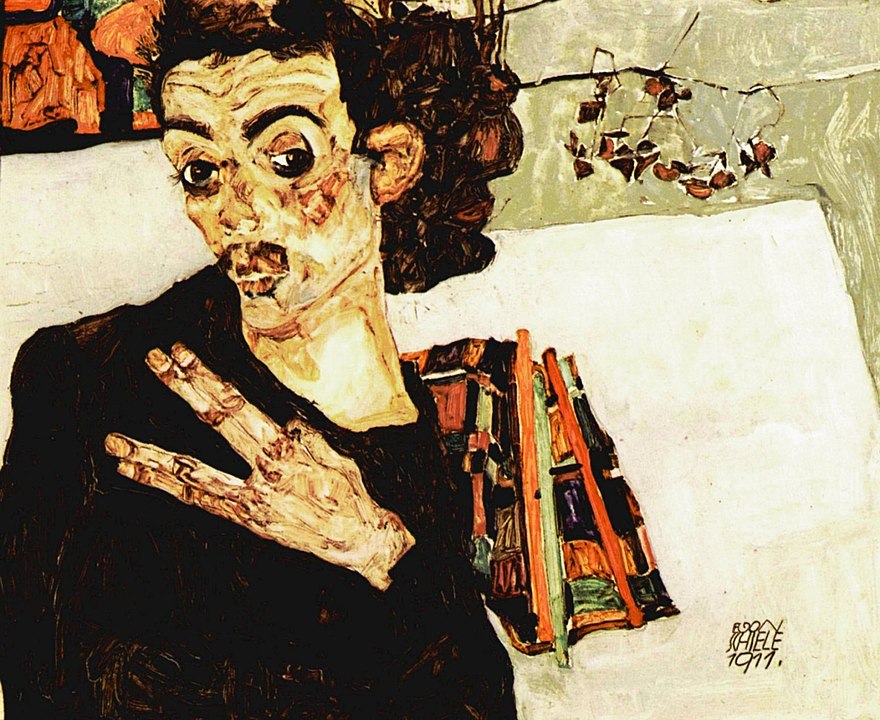
Self-portrait with black clay pot, 1911
Egon Schiele (1890 - 1918) was an Austrian-born painter, and in honor of the Egon Schiele exhibition to be held at the Tokyo Metropolitan Art Museum from January 26 (Thu) to April 9 (Sun), 2023, the life and works of this unique artist will be explained.
Born at the end of the 20th century, Schiele is famous for his unique drawings of twisted figures. While influenced by the Viennese Secession, including Gustav Klimt, as well as Symbolism and Expressionism, Schiele pursued his own unique style of painting. His strongly individualistic style of painting gives viewers a sensory impact, and is often classified under the category of Expressionism.
Schiele's Life: Childhood
As a child, Schiele was obsessed with trains. He drew so many sketches of trains that he was so immersed in them that his father felt he had to throw away his sketchbooks. He says that in elementary and junior high school, he was a point-blank failure in all subjects except physical education and art subjects. It is also said that he had an incestuous love for his sister Gertrude (Gerti), four years younger than him, and there is an anecdote that at the age of 16, he took the then 12-year-old Gerti out without permission and spent time with her at a hotel in Trieste.
The Academy Years
The first professional art education began in 1906 at the Vienna Academy of Arts and Crafts, where Klimt had previously studied. Klimt had previously studied there. Within a year of entering the academy, he was transferred to the Academy of Fine Arts in Vienna to study pure art.
In 1907, Schiele became acquainted with Gustav Klimt. Klimt was a great mentor to young artists and took a particular interest in Schiele. He exchanged drawings with Schiele, arranged for models, and introduced him to patrons. He also introduced Schiele to the Wiener Werkstätte, where many of the Secession painters were also members.
In 1909, Schiele left the Academy with his colleagues to found his own group, the Neukunstgruppe (New Group). During this period, Schiele was heavily influenced by Klimtkoschka. However, he soon developed his own style.
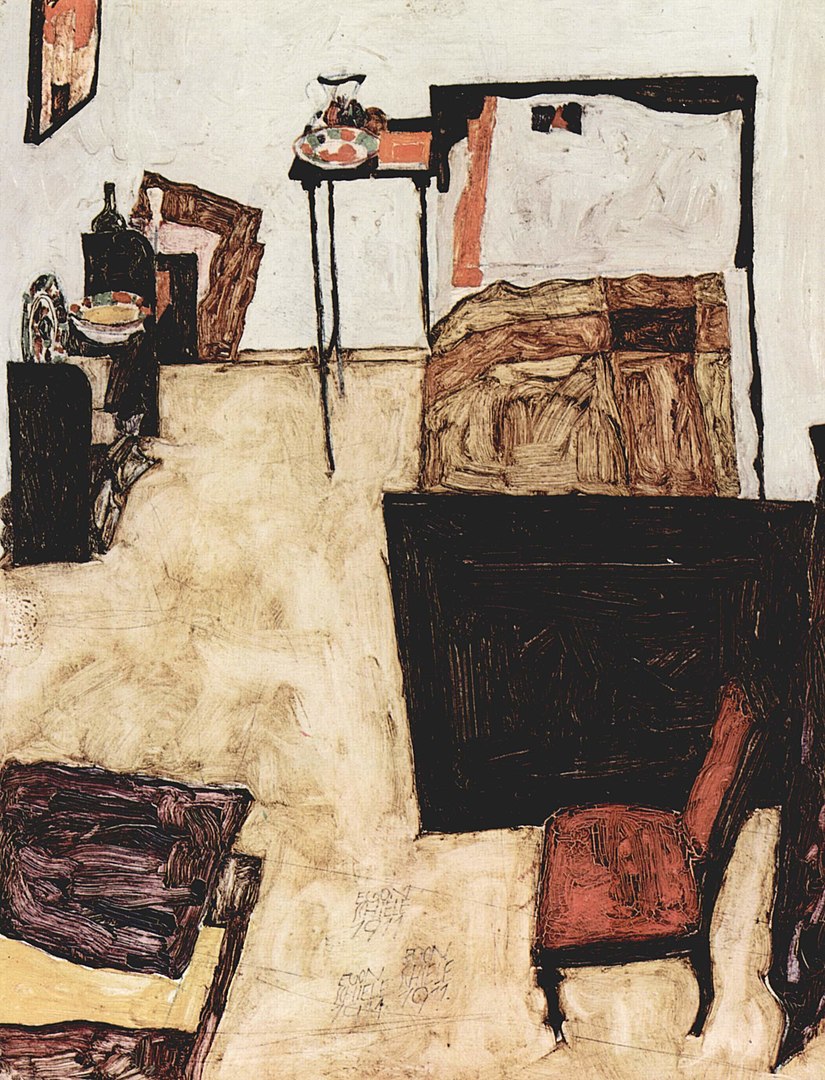
Living room in Neulengbach, 1911

Oscar Kokoschka
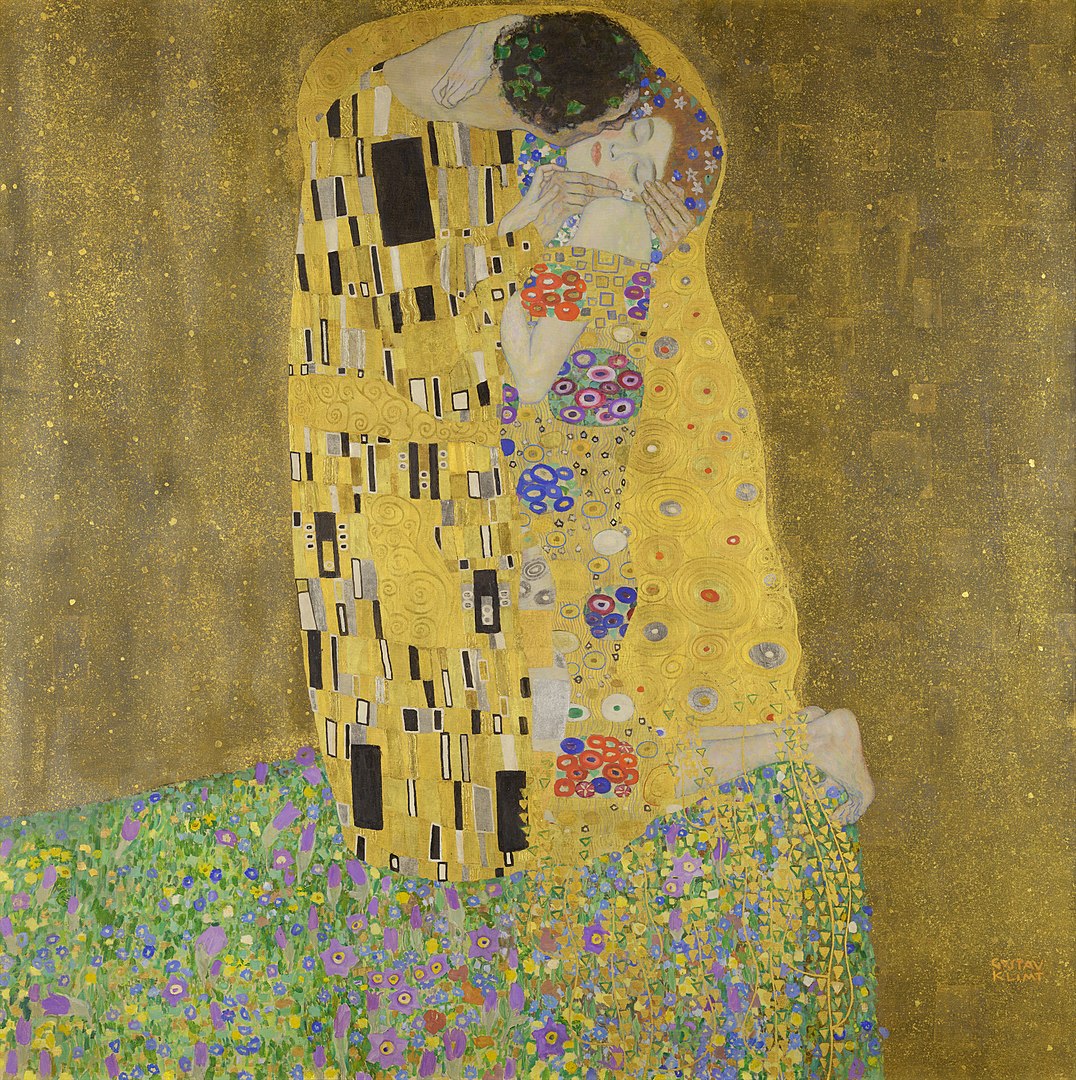
The Kiss, 1907-08
Completion of the Circe style
In the same year, Schiele was invited by Klimt to exhibit at the Kunstschau, where he encountered paintings by Edvard Munch,Jan Torop, andVincent van Gogh, and was struck by the Impressionist and Post-Impressionist styles. Under their influence, Schiele became free from the human form, and later also from the expression of "sex.
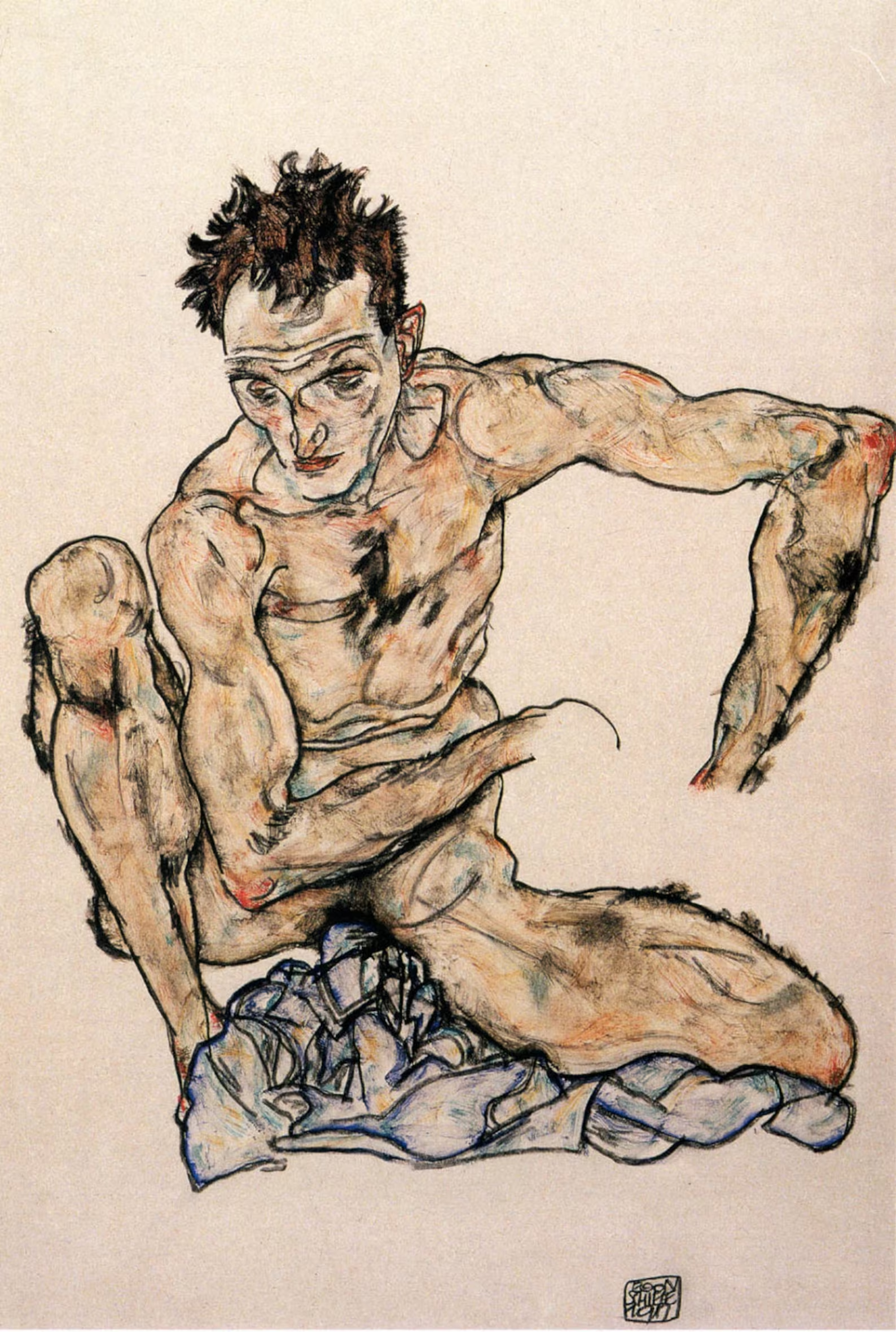
Self-Portrait Squatting, 1916
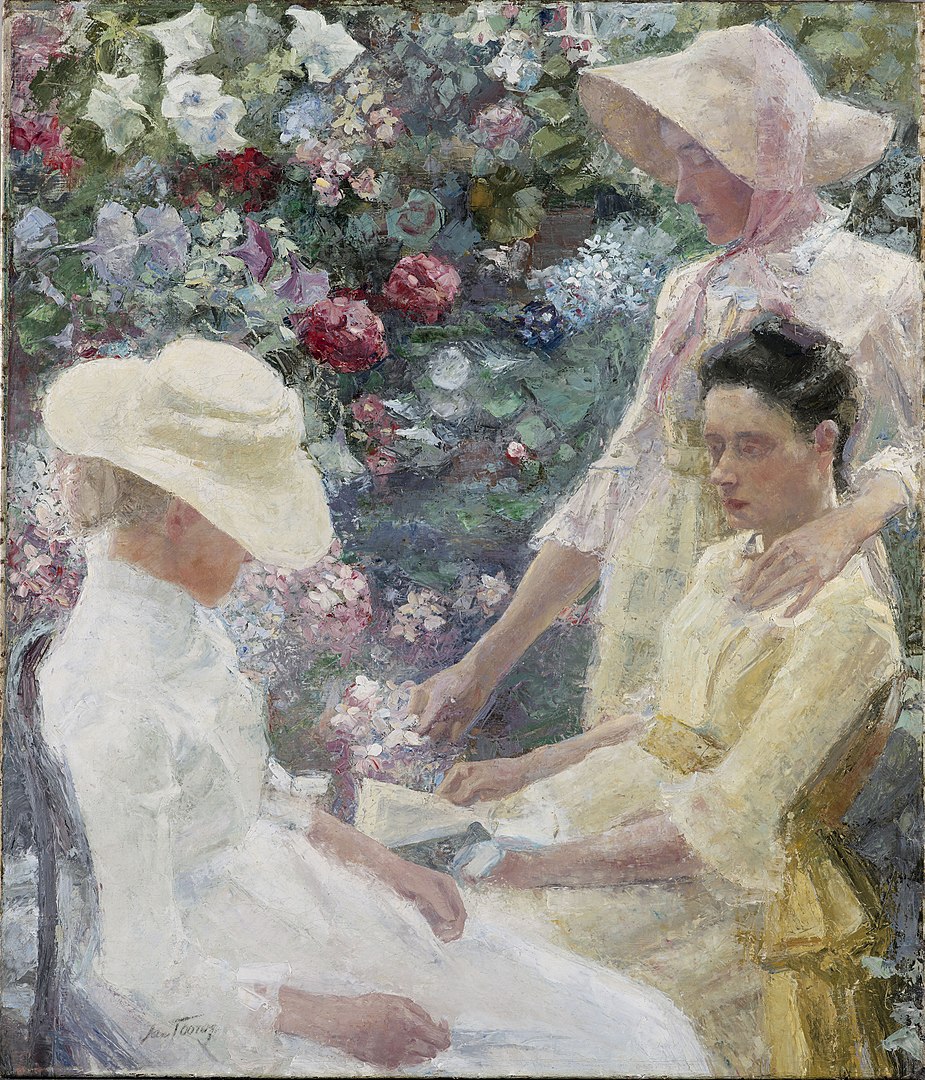
Trio fleuri (1886)

The Scream by Edvard Munch
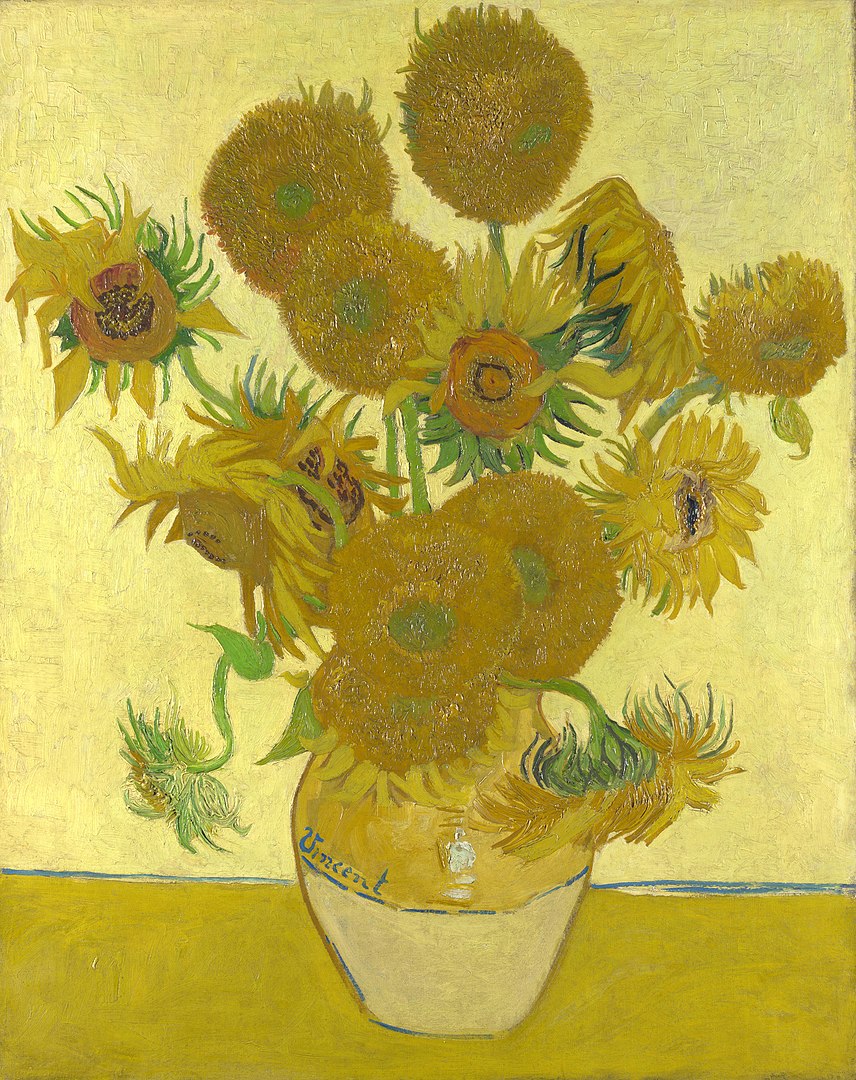
Sunflowers by Vincent van Gogh
Schiele painted his first self-portrait at the age of 20. The series of unique drawings that followed were, simply put, "sexually explicit.
Before Schiele, Klimt had left many erotic figures, but his world was more aesthetically purified.
In contrast, Schiele's figures are raw, hairy, and bony. Schiele himself and his models pose as if they live for sex, as if sex is the essence of their lives. Here, sex is an end in itself, not a means to be transformed into something else, a sublime group of people in love.
The embrace (Lovers II), 1917
Move to Neulengbach and arrest
When Schiele moved to the village of Neulengbach in search of an inexpensive studio and inspiration, he was greeted with skepticism by the residents.
In April 1912, Schiele was arrested for seducing a 13-year-old girl (sexual consent was only allowed over the age of 14).
When the police entered his studio, they found a large number of obscene drawings scattered throughout the studio. These were determined to be pornographic, and one of the drawings was burned in court with the judge's candle.
Although the indictment was dismissed, he was detained for a total of 24 days on a separate charge of displaying obscene material in plain view of a young girl. During this period, Schiele left 12 drawings of his painful experiences at the jail.
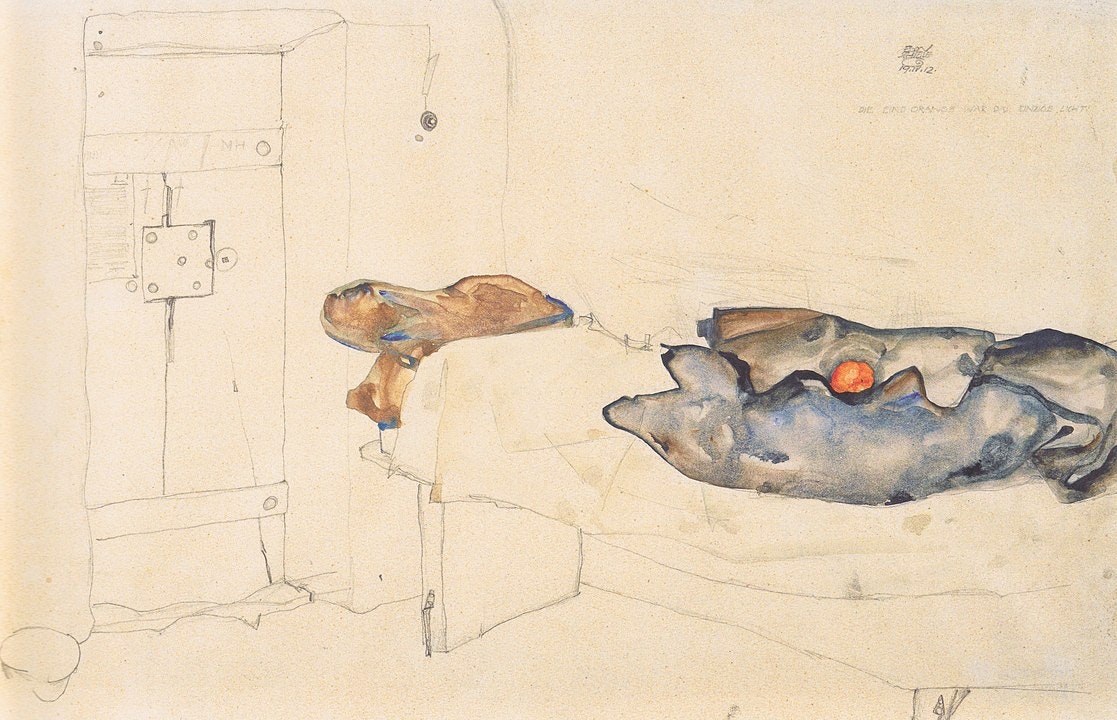
Schiele's drawing of his prison cell in Neulengbach
Marriage, Service, and Death
In 1914, Schiele returned to Vienna, where he met the Harms sisters Edith and Adele, the daughters of a middle-class craftsman who lived across the street from him. Eventually Schiele married her sister Edith. Although she married Edith, she also had a close relationship with her sister-in-law Adele. In the work "Woman Sitting in Purple Socks" (1917), which is modeled on her sister-in-law Adele in her underwear, Adele confesses to having had a sexual relationship with Schiele during this period.
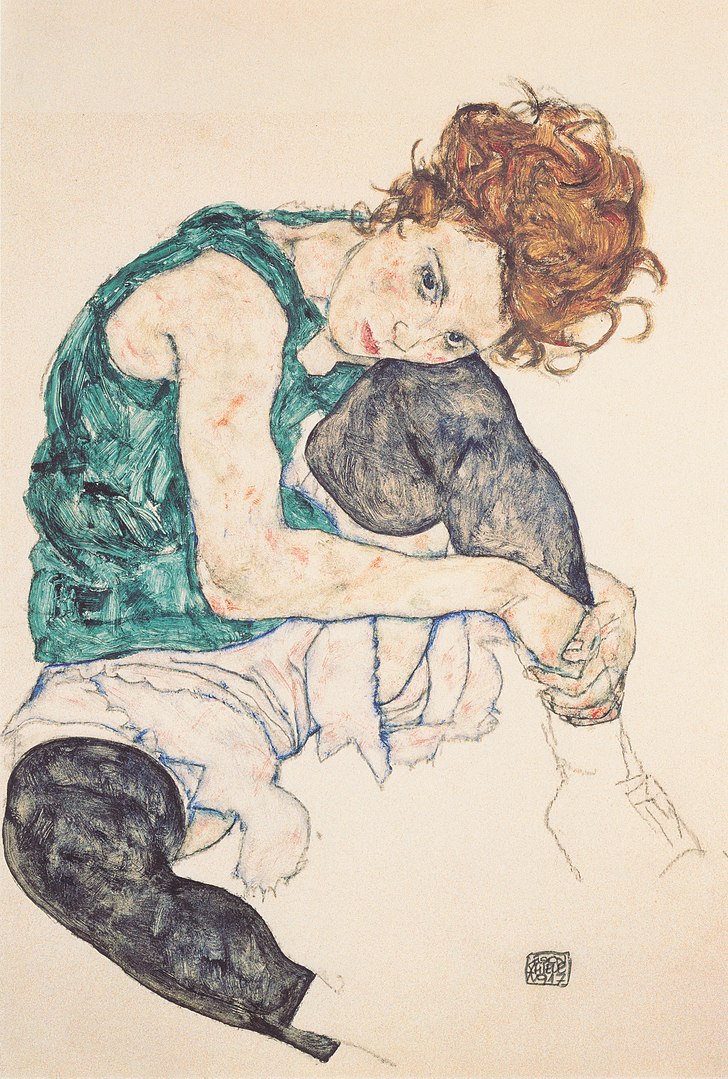
Seated woman with bent knees, 1917
Three days after their marriage, World War I broke out, and the 24-year-old Schiele was drafted into the Austro-Hungarian Imperial Army. Although his work was interrupted, he was not assigned to the front lines and was able to continue sketching and developing his work in the context of the war experience, primarily as a prisoner of war camp guard in the rear in Prague. In 1917, he was transferred to the capital city of Vienna, where he was able to resume his work and reportedly devoted himself to the production of ideas he had been working on.
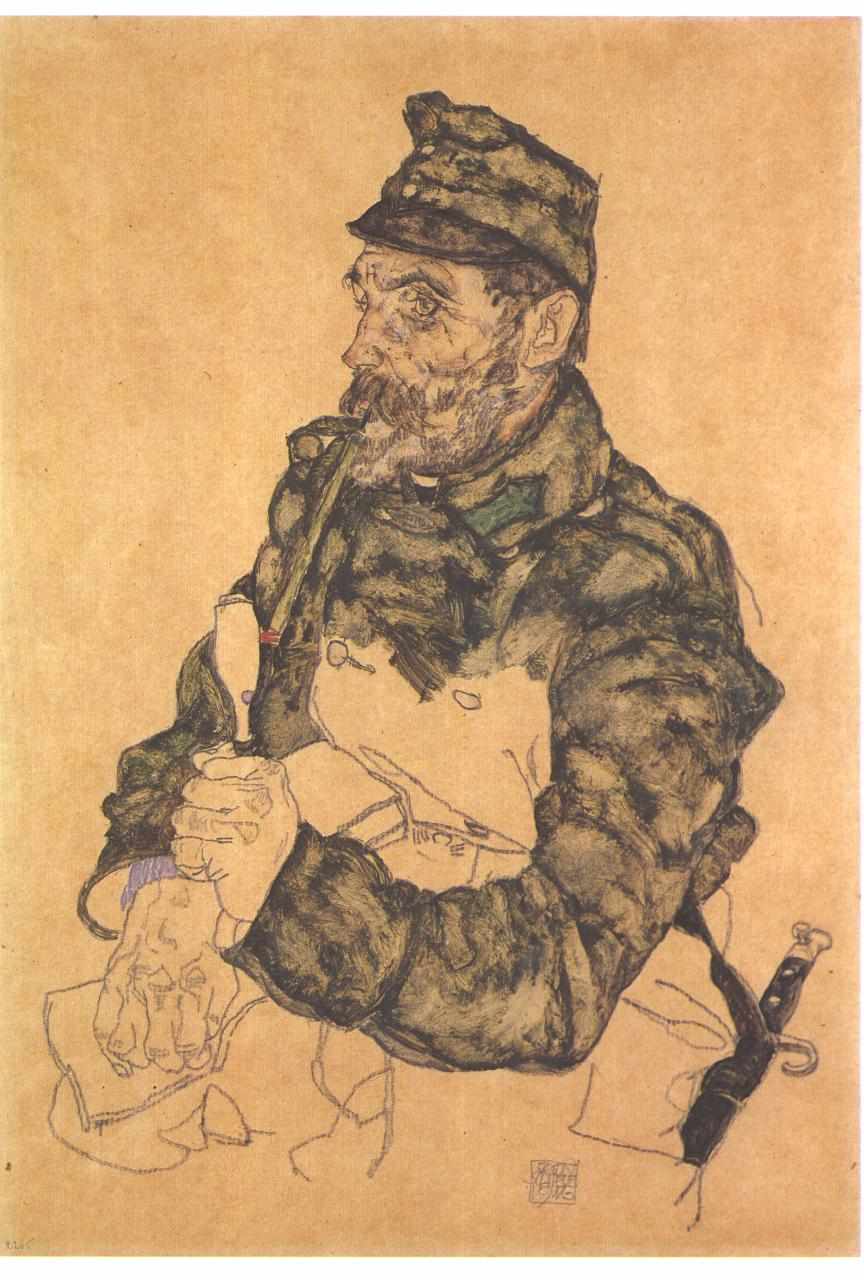
Sketches made during his military service, 1915
In 1918, near the end of World War I, Schiele unveiled more than 50 new works at Klimt's 49th exhibition of the Vienna Secession.
Schiele's works, which had not been very well known until then, attracted a great deal of attention. The prices of Schiele's paintings rose, and requests began to come in to purchase them one after another. In July of the same year, Schiele opened a new studio at 6 Hietzing Wattmannstrasse in Vienna's 13th district, where the wealthy lived. He took a big step forward as a successful painter in a high-class residential area, but his wife, Edith, contracted the Spanish flu that was prevalent around the time of the World War II, and died on October 28, while pregnant with Schiele's child. Schiele also fell ill and was nursed by his wife's family, but died on October 31. According to his sister-in-law, Adele Harms, on his deathbed, Schiele said, "The battle is over. I have to go now. My paintings should be exhibited in museums all over the world.
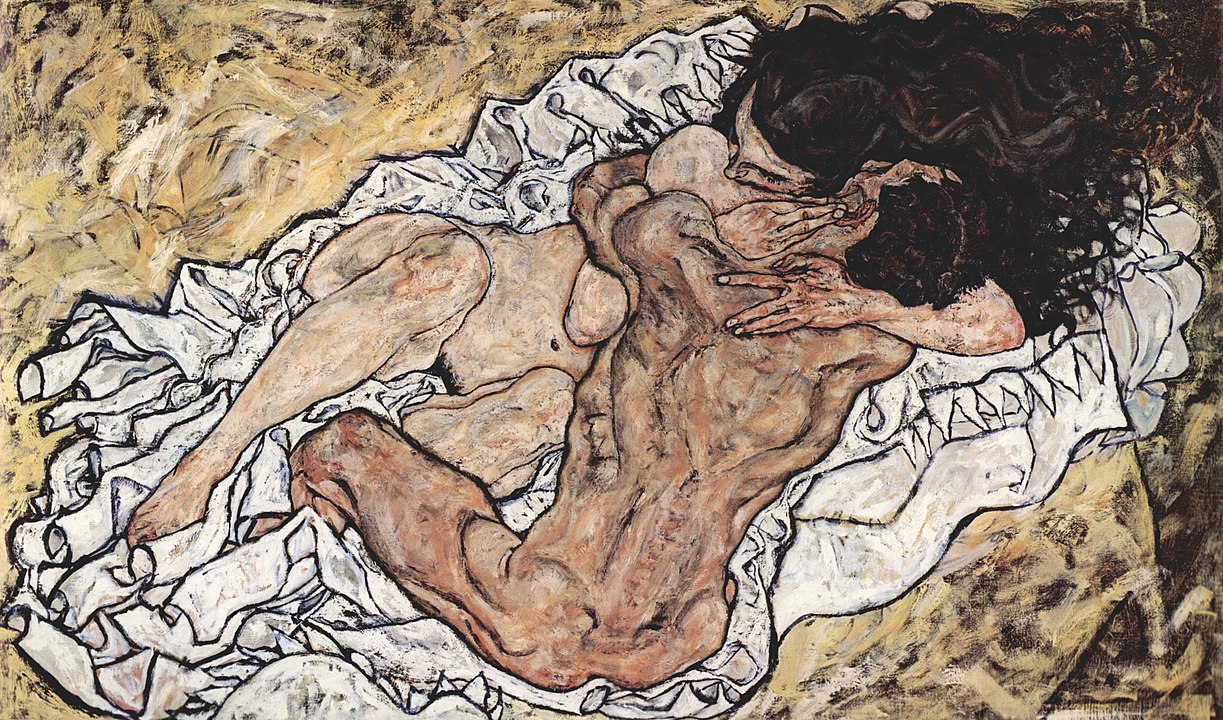
Friendship, 1913
_-_4277_-_%C3%96sterreichische_Galerie_Belvedere.jpg)
The Family, 1918
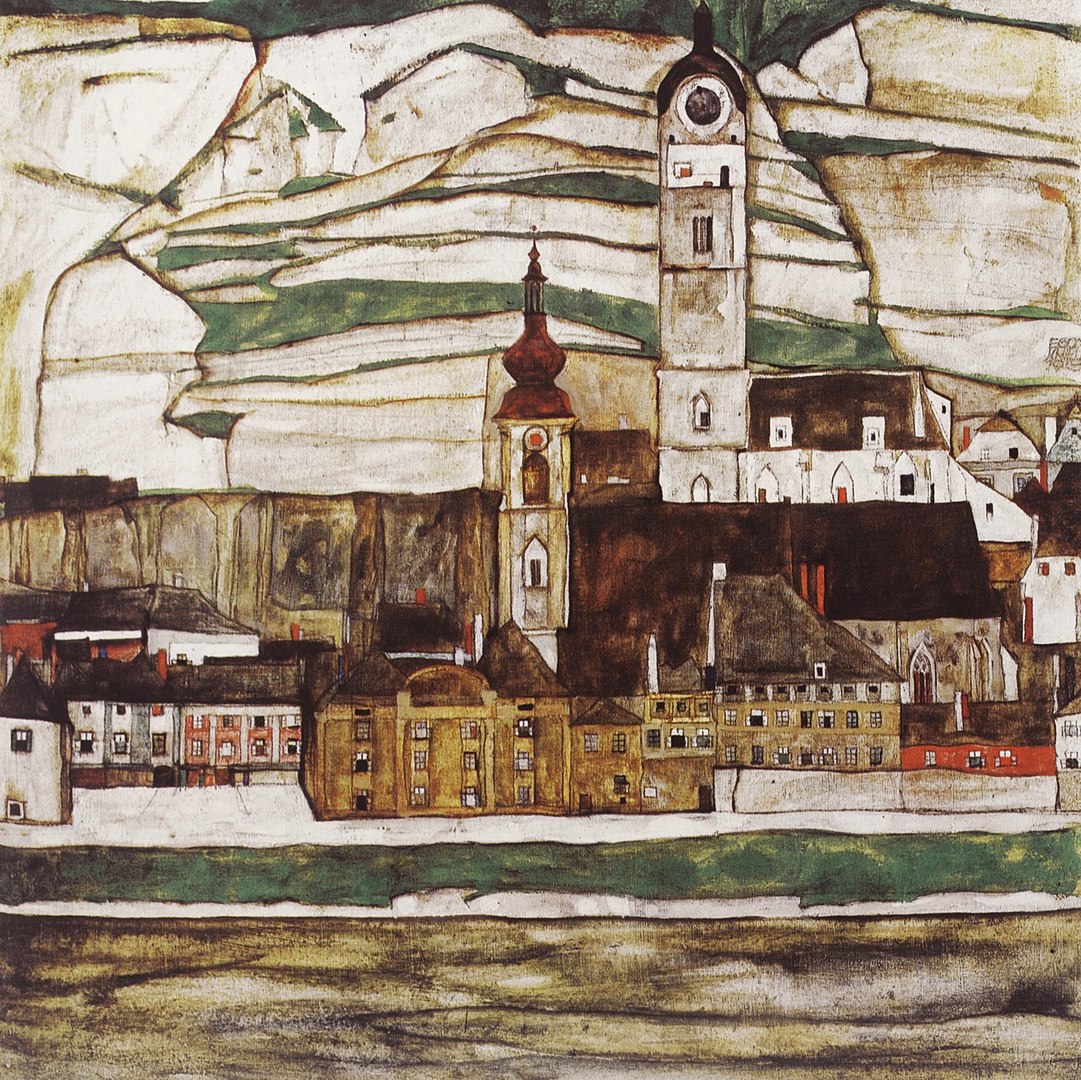
Stein an der Donau II, 1913